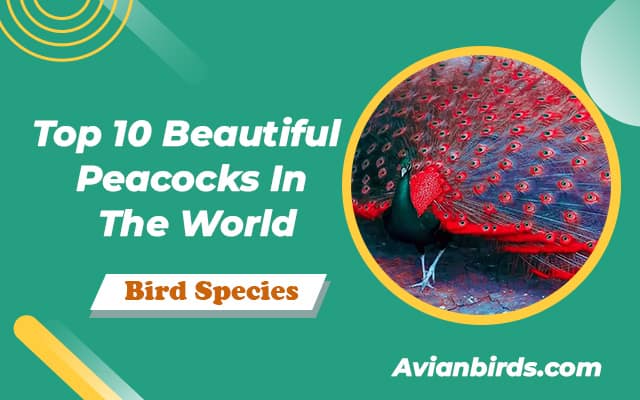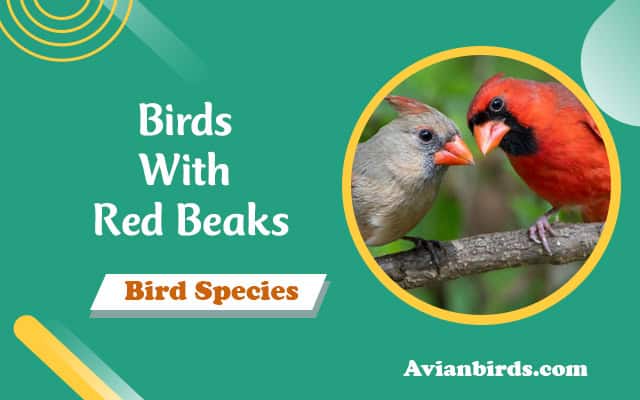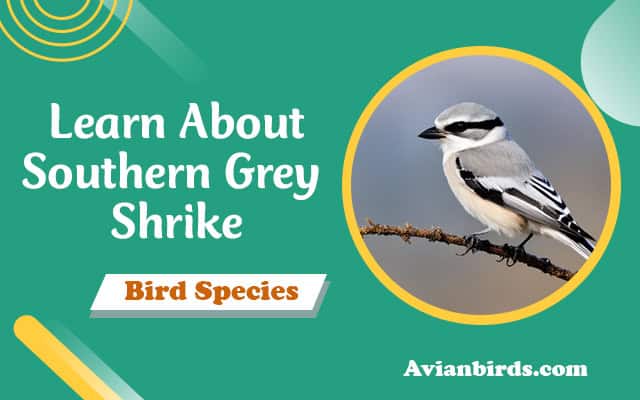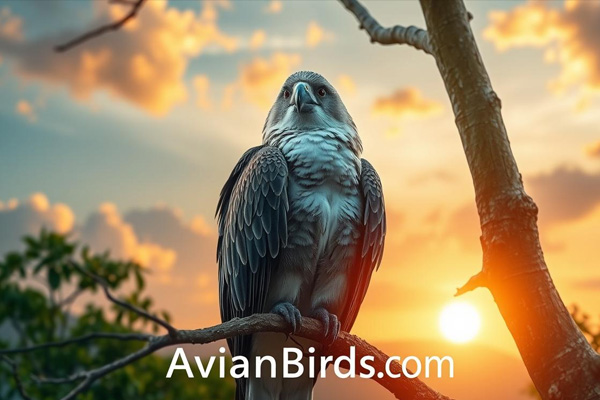Top 10 Beautiful Peacocks In The World
With their vibrant colors and stunning plumage, peacocks captivate our imagination and evoke a sense of awe. From the iridescent blues and greens of their feathers to the mesmerizing feather displays of the males, these majestic creatures have fascinated humans for centuries.
In this article, we present a curated list of the top 10 most beautiful peacocks in the world. Join us on a journey to explore the diversity and splendor of these remarkable birds, as we delve into their unique characteristics and showcase stunning photographs that capture their breathtaking beauty.
Here are the main points:
- Peacocks are considered one of the most beautiful birds in the world.
- Their vibrant colors and stunning plumage captivate our imagination.
- Male peacocks use extravagant displays to attract females.
- Peacocks can be found in various parts of the world, each with its own unique characteristics.
- Conservation efforts are crucial to protecting peacocks and their natural habitats.
Indian Peafowl:
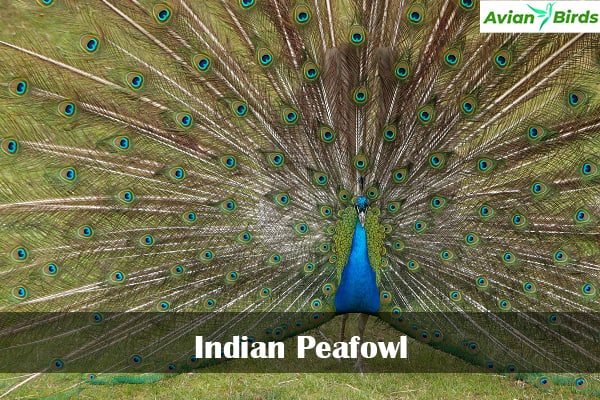
The Indian peafowl, also known as the peacock, is one of the most beautiful birds in the world. With its impressive size and breathtaking plumage, it is no wonder that it is the national bird of India.
| Key Features | Interesting Facts |
|---|---|
| 1. Vibrant plumage: | The male Indian peafowl is renowned for its vibrant plumage, displaying a mesmerizing combination of blue, green, and gold. This colorful display is a visual treat for all who witness it. |
| 2. Majestic train: | The male Indian peafowl’s train, consisting of long, iridescent tail feathers, is its most striking feature. These feathers can reach up to 6 feet in length, creating a stunning spectacle when fanned out. |
| 3. Courtship displays: | During mating season, male Indian peafowls engage in elaborate courtship displays to attract females. They fan out their feathers, spread their wings, and perform dances, creating a mesmerizing show of beauty and grace. |
“The Indian peafowl’s vibrant plumage and majestic train make it a true symbol of beauty and grace.” – Indian Wildlife Society
The Role of the National Bird
The Indian peafowl holds a special place in the hearts of Indians as the national bird. It represents the country’s vibrant and diverse wildlife, serving as a reminder of the importance of conservation and preserving natural beauty.
The Indian peafowl’s stunning appearance and captivating displays have long inspired poets, artists, and musicians, making it an iconic symbol of India’s cultural heritage. Its beauty, both in the wild and in captivity, continues to awe and inspire people around the world.
Green Peafowl:
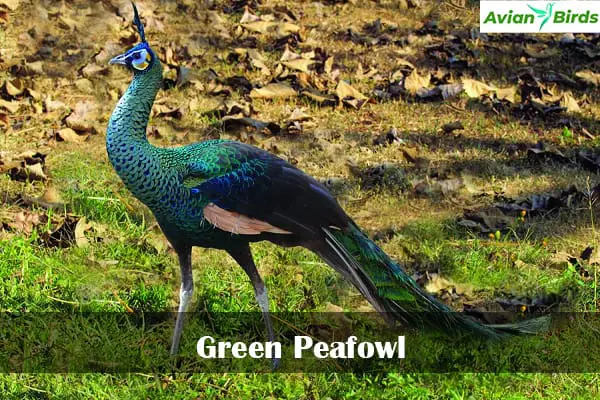
When it comes to fascinating and beautiful bird species, few can rival the green peafowl. This stunning avian creature, found in the breathtaking landscapes of Southeast Asia, is a true masterpiece of nature.
The green peafowl’s most captivating feature is its majestic plumage. With brilliant hues of green and blue, this exotic bird stands out as a vibrant symbol of the region’s rich biodiversity. Its magnificent feathers are a source of awe and wonder, attracting photographers and bird enthusiasts from around the world.
“The green peafowl’s stunning plumage is a testament to the beauty that exists in nature. It is truly a sight to behold and capture in photographs.” – Wildlife photographer, David Chen
This unique bird species is known for its regal presence and graceful demeanor. With its elegant long tail feathers and proud sapphire crest, the green peafowl commands attention wherever it goes. It is a symbol of exotic allure and a remarkable showcase of nature’s artistry.
Southeast Asia’s Natural Gem
Found in the lush forests and wetlands of Southeast Asia, the green peafowl thrives in the diverse ecosystems of countries such as Thailand, Cambodia, Vietnam, and Myanmar. It is perfectly adapted to the region’s tropical climate and can be spotted in both protected areas and the wild.
While its appearance may be similar to its more well-known cousin, the Indian peafowl, the green peafowl possesses a distinct charm that sets it apart. Its vibrant plumage and unique call make it a true treasure of Southeast Asia, captivating both locals and visitors alike.
Conservation and Protection
Due to habitat loss and poaching, the green peafowl population has faced significant challenges in recent years. Efforts are being made by local conservation organizations and governments to protect these beautiful birds and their natural habitats.
Conservation measures focus on creating designated sanctuaries, providing education and awareness to local communities, and implementing regulations on hunting and illegal wildlife trade. Through these collective efforts, the green peafowl and other endangered species in Southeast Asia have a better chance of thriving for generations to come.
| Green Peafowl Facts | |
|---|---|
| Scientific Name | Pavo muticus |
| Habitat | Southeast Asia – forests, wetlands |
| Conservation Status | Endangered |
| Feather Colors | Green, Blue |
| Distinct Feature | Long tail feathers, sapphire crest |
As we marvel at the green peafowl’s beauty and recognize its role as a flagship species for conservation efforts, we are reminded of the importance of preserving the biodiversity of Southeast Asia. By appreciating and protecting these unique bird species, we can contribute to the conservation of our natural heritage and help maintain the balance of our fragile ecosystems.
Congo Peafowl:
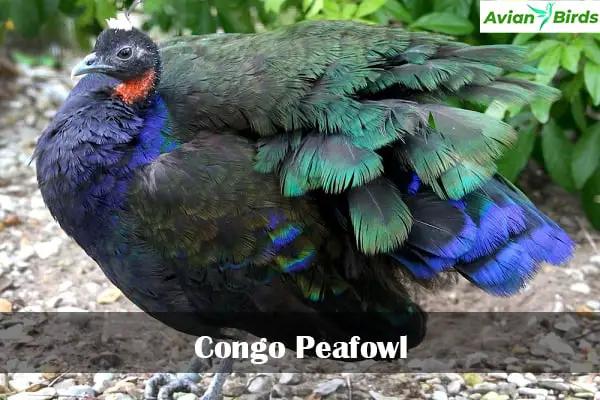
The Congo peafowl, a native of the dense forests of Central Africa, is truly a sight to behold. With its magnificent plumage, this bird has garnered a reputation as one of the most beautiful peafowl in the world.
As its name suggests, the Congo peafowl is primarily found in the rainforests of the Congo Basin. Its natural habitat provides the perfect backdrop for its striking colors to shine. The lush greenery and diverse ecosystems of these forests create a magical setting for the vibrant hues of the Congo peafowl.
“The metallic sheen and breathtaking colors of the Congo peafowl make it a true marvel of nature.”
What sets the Congo peafowl apart from its more commonly known relative, the Indian peafowl, is its unique appearance. While the Indian peafowl showcases vivid blues and greens, the Congo peafowl sports a stunning mix of metallic hues, including rich purples and iridescent blues and greens. These vibrant colors complement each other beautifully, making the Congo peafowl an enchanting creature to behold.
The Congo peafowl’s extravagant plumage serves a dual purpose. Not only does it attract the attention of potential mates, but it also provides protection in its forest habitat. The colorful display acts as camouflage among the lush foliage, allowing the Congo peafowl to blend in seamlessly with its surroundings.
The Congo Peafowl in Numbers
| Scientific Name | Common Name | Conservation Status |
|---|---|---|
| Afropavo congensis | Congo Peafowl | Vulnerable |
Conservation Status: Vulnerable
Population Trend: Decreasing
Main Threats:
- Habitat loss due to deforestation
- Illegal hunting for bushmeat
Distribution: Central Africa, primarily in the rainforests of the Congo Basin
Size and Weight: Adult males can reach a length of approximately 64 centimeters (25 inches) and weigh between 2.5 to 3 kilograms (5.5 to 6.6 pounds).
Feeding Habits: The Congo peafowl primarily feeds on fruits, seeds, insects, and small vertebrates.
Did You Know? The Congo peafowl was first described by French explorer Pierre Savorgnan de Brazza during his expedition to the Congo Basin in the late 19th century.
Colorful Feather Patterns
Peacocks are truly fascinating creatures, renowned for their exquisite feather patterns. These majestic birds possess a remarkable ability to showcase an array of vibrant colors, creating a visual spectacle that is nothing short of awe-inspiring.
Their feathers, adorned with eye-catching hues and intricate designs, are nature’s very own masterpiece. The striking combination of blues, greens, and iridescent shades creates a kaleidoscope of colors that captivates and mesmerizes all who gaze upon them.
One of the most remarkable features of peacock feathers is their ability to reflect and refract light, resulting in a breathtaking display of vibrant tones. This optical effect, known as iridescence, gives their plumage an ethereal quality, as if each feather holds a secret sparkle.
“The colorful feather patterns of peacocks serve as a natural expression of beauty and courtship. They play a crucial role in attracting mates and establishing dominance among males.”
The feathers themselves are not only visually stunning but also boast intricate designs that are a testament to the intricacy of nature. Delicate lines, known as “ocelli,” adorn the outer edges of the feathers, creating a mesmerizing pattern that resembles a row of majestic eyes.
Each peacock has its own unique feather pattern, making them truly one-of-a-kind. No two birds share the exact same arrangement of colors and designs, further adding to the allure and charm of these magnificent creatures.
These colorful feather patterns have evolved over millions of years, through a process of natural selection. They serve a critical purpose in the world of peacocks, attracting potential mates and establishing dominance among males.
Feathers as a Means of Attraction and Courtship
The vibrant colors and intricate designs of peacock feathers play a vital role in the courtship rituals of these birds. During mating season, male peacocks engage in elaborate displays, fanning out their feathers to create a dazzling spectacle of beauty and allure.
The vibrant hues and intricate patterns effectively capture the attention of female peahens, who are drawn to these displays of grandeur. The more vibrant and colorful the feathers, the greater the chances of attracting a mate.
These displays are a remarkable sight to behold, as peacocks strut and dance with their feathers fully spread, creating a breathtaking visual experience. The vibrant colors, combined with the rhythmic movements, create a captivating performance that showcases the peacock’s magnificence.
The colorful feather patterns of peacocks not only serve as a means of attraction but also help establish dominance within the male peacock community. During territorial disputes, males display their plumage in an attempt to intimidate rivals and establish their dominance.
These mesmerizing feather displays are a true testament to the beauty and grandeur of peacocks. They serve as a reminder of the wonders of nature and the incredible diversity of life on our planet.
| Feather Color | Meaning in Peacock Courtship |
|---|---|
| Blue | Symbolizes loyalty and trust |
| Green | Represents renewal and growth |
| Gold | Suggests wealth and prosperity |
| Orange | Symbolizes enthusiasm and passion |
| Purple | Represents royalty and power |
The table above provides a glimpse into the symbolism behind the various colors found in peacock feathers during courtship. Each color holds its own significance, contributing to the overall visual spectacle that is a peacock’s display.
As we marvel at the colorful feather patterns of peacocks, let us appreciate the remarkable beauty of these creatures and the role they play in the intricate dance of attraction and courtship in the natural world.
Feather Displays: The Dance of Attractiveness
Male peacocks are truly masters of seduction, using their exquisite feather displays to attract females. These magnificent birds belong to various peacock species, each with its own unique and captivating display techniques.
The Mesmerizing Plumage
Their vibrant feather displays are a visual treat, featuring a brilliant combination of iridescent blues, greens, and golds. The intricate patterns and shimmering colors catch the light, creating a mesmerizing spectacle.
“Male peacocks flaunt their feather displays in a ritual dance, showcasing their beauty and prowess.”
A Dazzling Courtship Ritual
During the mating season, male peacocks spread their feathers wide, forming an awe-inspiring fan-like display. They rhythmically raise and lower their ornate train, creating a sense of rhythm and grace as they “dance.”
This elaborate performance serves two purposes: to display their physical attractiveness and to demonstrate their agility and strength. The impressive size of their displays, often spanning several feet, is a testament to their evolutionary success in attracting females.
Irresistible Charms
The stunning feather displays of male peacocks are irresistibly enticing to female peahens. The peahens carefully observe the dances and displays, evaluating the male’s genetic fitness and ability to provide strong offspring.
The more vibrant and symmetrical the feather displays, the more likely a male peacock is to attract a mate. These displays are a testament to the male’s health and genetic superiority, making them a sought-after partner during the breeding season.
A True Spectacle
Witnessing a male peacock’s feather display is an unforgettable experience. These dances of attractiveness showcase the unparalleled beauty and elegance of these remarkable birds.
Whether in the dense forests of Central Africa, the vibrant landscapes of India, or the exotic realms of Southeast Asia, the feather displays of peacocks captivate and leave us in awe of nature’s mastery.
Beauty Beyond Borders: Peacocks Around the World
Peacocks are truly magnificent creatures, and they can be found in various parts of the world, each with its own unique characteristics. From the lush forests of India to the exotic landscapes of Southeast Asia, let’s explore some of the most stunning peacock species from around the globe.
Indian Peafowl: The Jewel of the Subcontinent
The Indian peafowl, also known as the peacock, is native to the Indian subcontinent and is the national bird of India. With its vibrant blue and green plumage and its impressive courtship displays, the Indian peafowl is a symbol of beauty and grace.
Green Peafowl: The Exquisite Gem of Southeast Asia
In Southeast Asia, you can find the green peafowl, a bird renowned for its unique and striking appearance. With its emerald-green feathers and long, flowing tail, the green peafowl is a true sight to behold.
Congo Peafowl: The Rare Gem of Central Africa
In the lush forests of Central Africa, the Congo peafowl reigns supreme. This beautiful bird is known for its shimmering, metallic-colored plumage, with feathers that range from iridescent blue to vibrant chestnut.
White Peacock: The Elegance of Simplicity
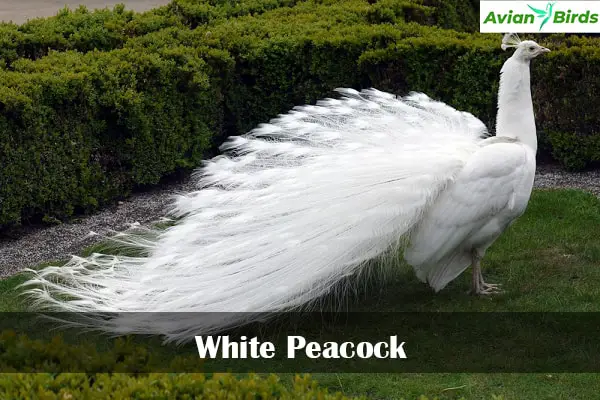
The white peacock, although not a separate species, is a color variant of the Indian peafowl, known for its majestic all-white plumage. Its ethereal beauty is often associated with purity and elegance.
Burmese Peacock: The Exotic Treasure of Myanmar

Native to Myanmar, the Burmese peacock is a rare and captivating bird. Its breathtaking combination of deep blue and green feathers, along with its elaborate courtship dances, make it a true spectacle.
Java Peafowl: The Regal Bird of Indonesia

The Java peafowl, found primarily on the Indonesian island of Java, showcases a stunning array of colors. With its rich blue plumage, iridescent green neck, and regal appearance, it is a symbol of beauty and prestige in Indonesian culture.
These are just a few examples of the beautiful peacock species found around the world. Each one is a testament to the wonders of nature and a showcase of the diversity and beauty that exists on our planet.
| Species | Location | Distinctive Features |
|---|---|---|
| Indian Peafowl | Indian subcontinent | Vibrant blue and green plumage |
| Green Peafowl | Southeast Asia | Emerald-green feathers, long flowing tail |
| Congo Peafowl | Central Africa | Shimmering metallic-colored plumage |
| White Peacock | India and other regions | All-white plumage |
| Burmese Peacock | Myanmar | Deep blue and green feathers |
| Java Peafowl | Indonesia (Java) | Rich blue plumage, iridescent green neck |
Feathered Facts: Fascinating Peacock Trivia
Peacocks, or peafowl, are truly enchanting creatures. Their striking appearance and captivating displays have fascinated humans for centuries. We will discuss some interesting facts about peacocks, shedding light on their mating habits, the differences between male and female birds, and other intriguing details about these magnificent creatures.
Male Birds: The Proud and Colorful Peacocks
The male peacock, also known as the peafowl, is renowned for its vibrant plumage. It is a sight to behold as its magnificent tail feathers fan out in a stunning display. These elaborate feathers, adorned with iridescent hues, play a crucial role in attracting female peafowl during courtship.
Did you know? Male peacocks use their colorful feathers to attract females. The more vibrant and elaborate the display, the more likely they are to catch the attention of a potential mate.
The male peacock’s feathers are not only visually appealing but also remarkable in their design. Each individual feather is marked with intricate patterns that create a mesmerizing effect. These patterns, called “ocelli,” serve as an additional attraction for females and add to the peacock’s allure.
Female Birds: The Elegance of Peahens
While male peacocks steal the limelight with their extravagant plumage, female peafowl, known as peahens, possess their own unique charm. Peahens have a more understated appearance, with mottled brown feathers that provide excellent camouflage in their natural surroundings.
Fun fact: Female peafowl play a vital role in selecting a suitable mate. They are often attracted to males with larger and more elaborate tail feathers, as this is seen as a sign of good health and genetic superiority.
Unlike their male counterparts, peahens do not possess the iconic long tail feathers. Instead, their feathers are shorter and less ornate. This difference in appearance between male and female peafowl is an example of sexual dimorphism, a common phenomenon in many bird species.
Peafowl Mating Habits: A Dance of Courtship
Mating season is an extraordinary time for peafowl, as it is when their striking behaviors come to the fore. Male peacocks engage in elaborate courtship displays, showcasing their feathers and performing intricate dances to capture the attention of peahens.
Did you know? Male peacocks can extend their tail feathers into a magnificent fan-like shape, spanning up to six feet in length. This spectacular display is a hallmark of peafowl courtship.
During the courtship ritual, male peacocks emit loud calls, known as “screams” or “honks,” to announce their presence and attract females. The combination of vibrant feathers, intricate dances, and resounding calls creates an enchanting spectacle that leaves a lasting impression.
Peafowl are fascinating creatures that continue to captivate us with their beauty and unique behaviors. By understanding their mating habits, the differences between male and female peafowl, and their captivating courtship displays, we gain a deeper appreciation for these majestic birds.
Stunning Peacock Photographs: A Captivating Visual Journey
Immerse yourself in the beauty of peacocks through a captivating visual journey, showcasing stunning peacock photographs that highlight their vibrant plumage and captivating presence. These photographs capture the essence of these magnificent birds, allowing you to appreciate their intricate patterns and vibrant colors.
Each photograph showcases the unique features and graceful movements of peacocks, revealing their striking feather displays and regal postures. From close-up shots that reveal the intricate details of their feathers to sweeping panoramic views that capture their majestic presence against stunning landscapes, these photographs offer a truly immersive experience.
“The beauty of peacocks is truly mesmerizing. Through these stunning photographs, we aim to transport you into the world of these captivating birds, where each image tells a story and captures a moment so exquisite that it leaves you in awe.”
As you browse through these stunning peacock photographs, you’ll witness the kaleidoscope of colors that adorn their feathers, ranging from deep blues and vibrant greens to shimmering golds and iridescent purples. These photographs not only showcase their physical beauty but also their alluring charm and charisma.
Photographing Peacocks in their Natural Habitat
Capturing these stunning peacock photographs requires patience, skill, and a deep understanding of the bird’s behavior. Photographers often spend hours observing peacocks in their natural habitat, waiting for the perfect moment to capture their breathtaking displays of feathers.
The process of photographing peacocks involves finding the right angles, ensuring proper lighting, and capturing their vibrant colors in all their glory. These photographers aim to reveal the essence of these birds through their lens, creating images that evoke a sense of wonder and appreciation for their beauty.
“Photographing peacocks is a true labor of love. It requires dedication, passion, and an eye for detail. But when you capture that perfect shot, it’s a moment of pure magic that brings the beauty of these birds to life.”
Through these stunning peacock photographs, we invite you to embark on a visual journey that celebrates the captivating beauty of these extraordinary birds. Whether you’re a nature enthusiast or simply appreciate the wonders of photography, these images are sure to leave you inspired and in awe of the remarkable beauty found in the world of peacocks.
Beyond Beauty: The Symbolism of Peacocks
Peacocks have long been revered for their stunning beauty and captivating appearance. However, their significance extends far beyond their physical attractiveness. These iconic birds hold deep symbolism and cultural meaning in various cultures throughout history.
Symbols of Prosperity and Good Fortune
In many cultures, peacocks are seen as symbols of prosperity and good fortune. Their vibrant feathers and regal posture are associated with abundance, wealth, and success. In Hinduism, for example, the peacock is considered the sacred bird of the goddess Lakshmi, the deity of wealth and prosperity.
“The peacock is a symbol of grace, joy, beauty, and love—the personification of divine beauty in Hinduism.” – Indira Rao, Indian Mythology Expert
Representations of Beauty and Elegance
Peacocks have always been admired for their majestic appearance and graceful demeanor. They are often regarded as the epitome of beauty and elegance. In art, literature, and fashion, the peacock motif is frequently used to convey a sense of opulence, sophistication, and grandeur.
Cultural Significance and Spiritual Connections
Peacocks hold spiritual significance in various religious and mythological traditions. In Christianity, the peacock is a symbol of resurrection and immortality, as its feathers were believed to retain their vibrant colors even after death. In ancient Greek and Roman mythology, the peacock was associated with the goddess Hera, representing immortality and divine protection.
Mystical Symbolism and Vibrant Energy
Beyond their cultural and spiritual connections, peacocks are often seen as mystical creatures, embodying radiant energy and spiritual transformation. The mesmerizing display of their feathers is thought to symbolize the awakening of inner beauty, self-expression, and the journey towards enlightenment.
Influence in Popular Culture and Art
The symbolism of peacocks has translated into popular culture, where their iconic image has been embraced in various forms of art, jewelry, and fashion. From ancient civilizations to modern-day trends, the peacock continues to inspire and captivate artists, designers, and individuals worldwide.
The Lasting Impact
Peacocks have left an indelible mark on human history, becoming timeless symbols of beauty, prosperity, and spirituality. Their iconic presence in various cultures reminds us of the intricate connection between nature, art, and the human experience.
| Symbolism | Cultural Connection |
|---|---|
| Prosperity and Good Fortune | Hinduism – Sacred bird of the goddess Lakshmi |
| Beauty and Elegance | Art, literature, and fashion – Symbol of opulence and grandeur |
| Spiritual Connections | Christianity – Symbol of resurrection and immortality |
| Mystical Symbolism | Awakening of inner beauty and self-expression |
| Popular Culture | Influence in art, jewelry, and fashion |
Exploring Peacock Conservation: Preserving Nature’s Masterpiece
At the heart of peacock conservation efforts is the protection of peafowl’s natural habitats. With urbanization and deforestation on the rise, it has become crucial to safeguard the environments where these magnificent birds thrive. By preserving their nesting grounds and securing crucial habitats, we can ensure the survival of these stunning creatures.
One of the greatest challenges in peafowl conservation is mitigating the impact of predators on their nests. Natural predators such as snakes and mammals pose a threat to peafowl eggs and chicks. Through effective monitoring and predator control measures, conservationists strive to minimize nesting failures and increase the chances of successful reproduction.
Conservation initiatives also focus on raising awareness about the importance of peacock conservation and the need to protect their habitats. By engaging local communities, educating the public, and collaborating with governmental and non-profit organizations, we can shape a brighter future for these iconic birds.
Bird Sanctuaries: Safe Havens for Peafowl
Bird sanctuaries play a critical role in peacock conservation efforts. These protected areas provide safe havens for peafowl to nest, feed, and thrive without the threat of habitat destruction or human intervention. With dedicated staff and resources, these sanctuaries ensure that peafowl populations are properly managed and their habitats are preserved for future generations to enjoy.
“Peacock conservation is not just about saving a species; it’s about preserving a natural masterpiece and maintaining the delicate balance of our ecosystems.” – BirdLife International
If you are passionate about peacock conservation, there are numerous ways you can contribute. From supporting local conservation organizations to participating in volunteer programs and advocating for stronger environmental policies, every effort counts in protecting these magnificent birds and their precious habitats.
We Are Guardians of Nature’s Masterpiece
As stewards of the natural world, it is our responsibility to protect and preserve the beauty of peafowl and their habitats. By understanding the needs of these birds and taking proactive measures to conserve their ecosystems, we can ensure that future generations will have the privilege of witnessing the majesty of peafowl in the wild.
Join us in the journey of exploring peacock conservation, where every action we take brings us closer to preserving nature’s masterpiece and securing a vibrant future for peafowl and their habitats.
Check Our Previous Articles:
Final Thoughts:
In conclusion, peacocks are undeniably one of the most beautiful birds in the world. Their vibrant colors, stunning plumage, and captivating displays make them a true sight to behold.
Whether found in India, Southeast Asia, or the forests of Central Africa, these unique bird species continue to dazzle and inspire us with their natural beauty.
From the majestic Indian peafowl to the exotic green peafowl and the rare Congo peafowl, each peacock species has its own distinct charm. Their colorful feather patterns and mesmerizing displays are a testament to nature’s masterpieces.
Let us cherish and appreciate these magnificent creatures, and strive to protect their habitats and ensure their survival for generations to come.

